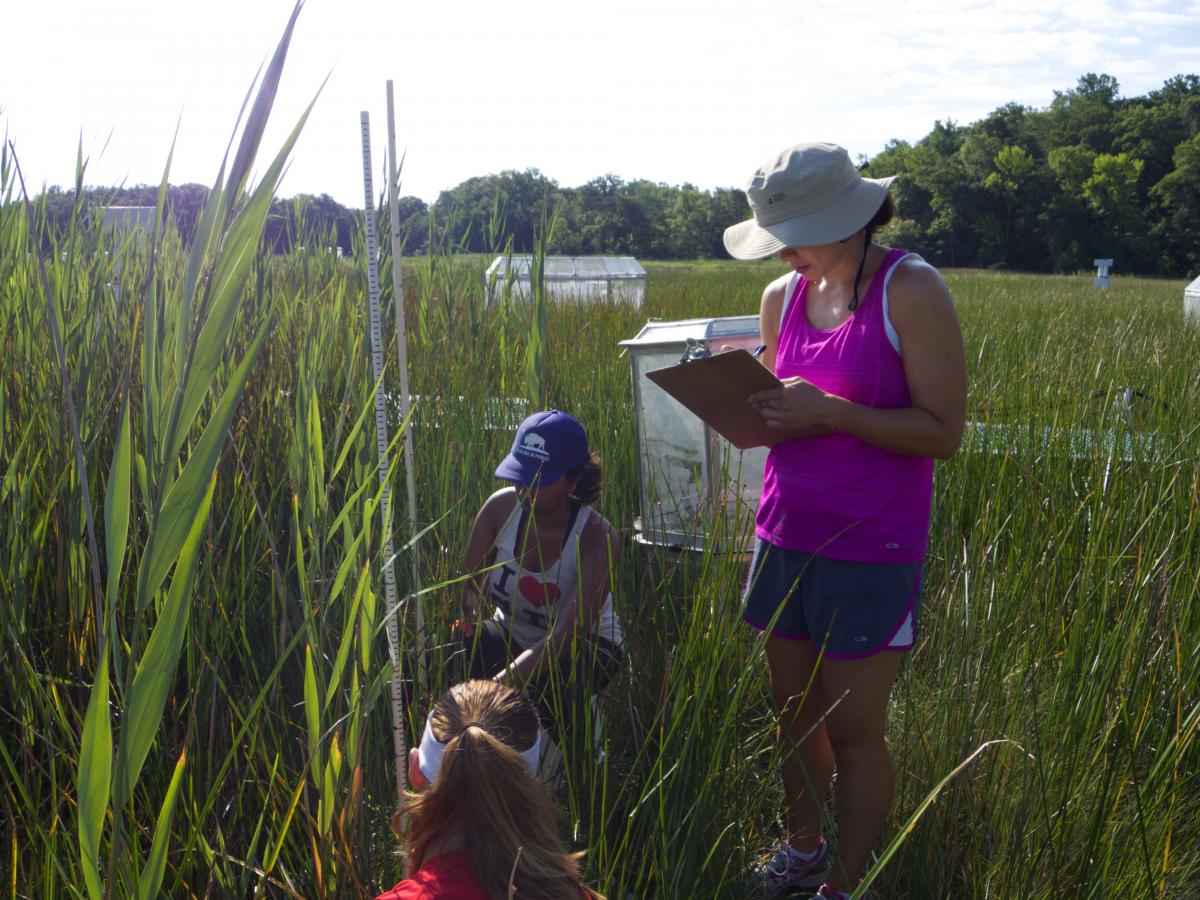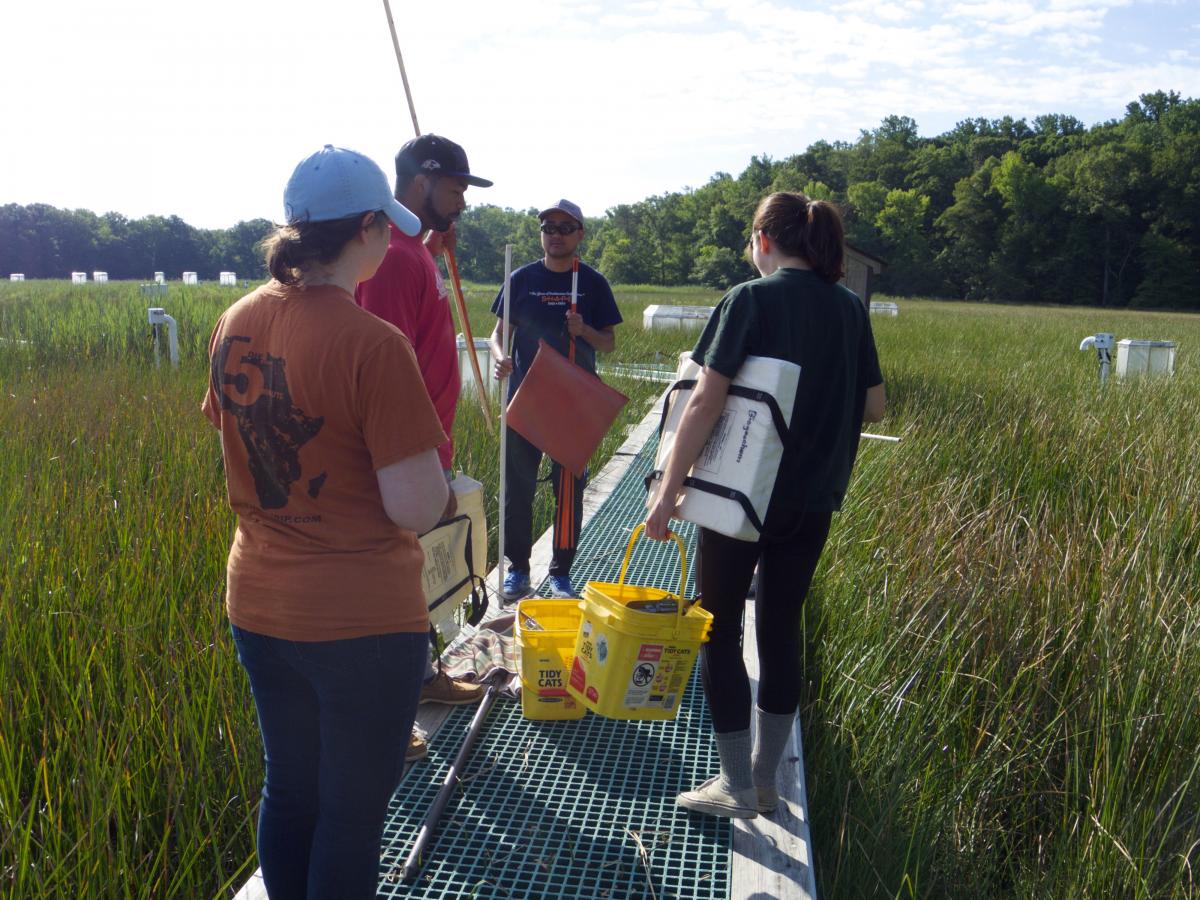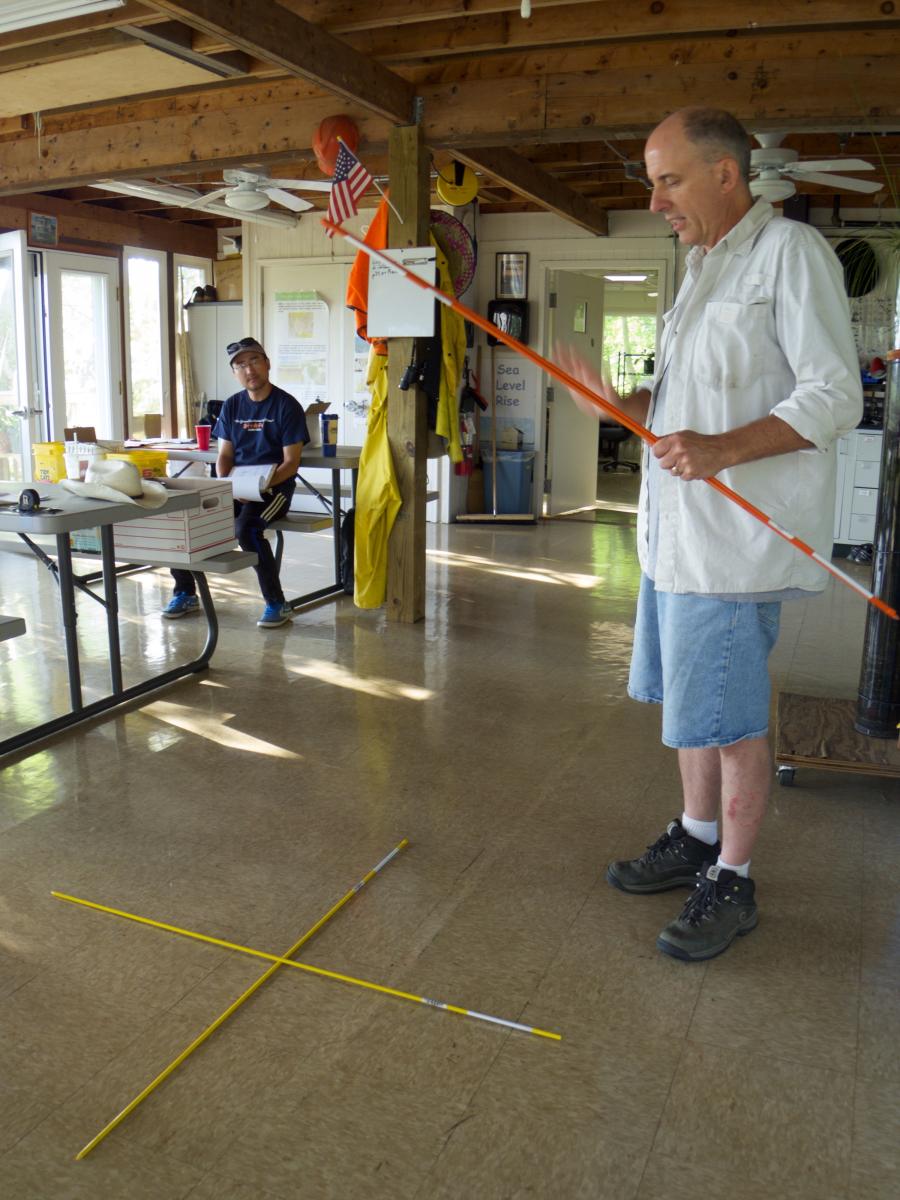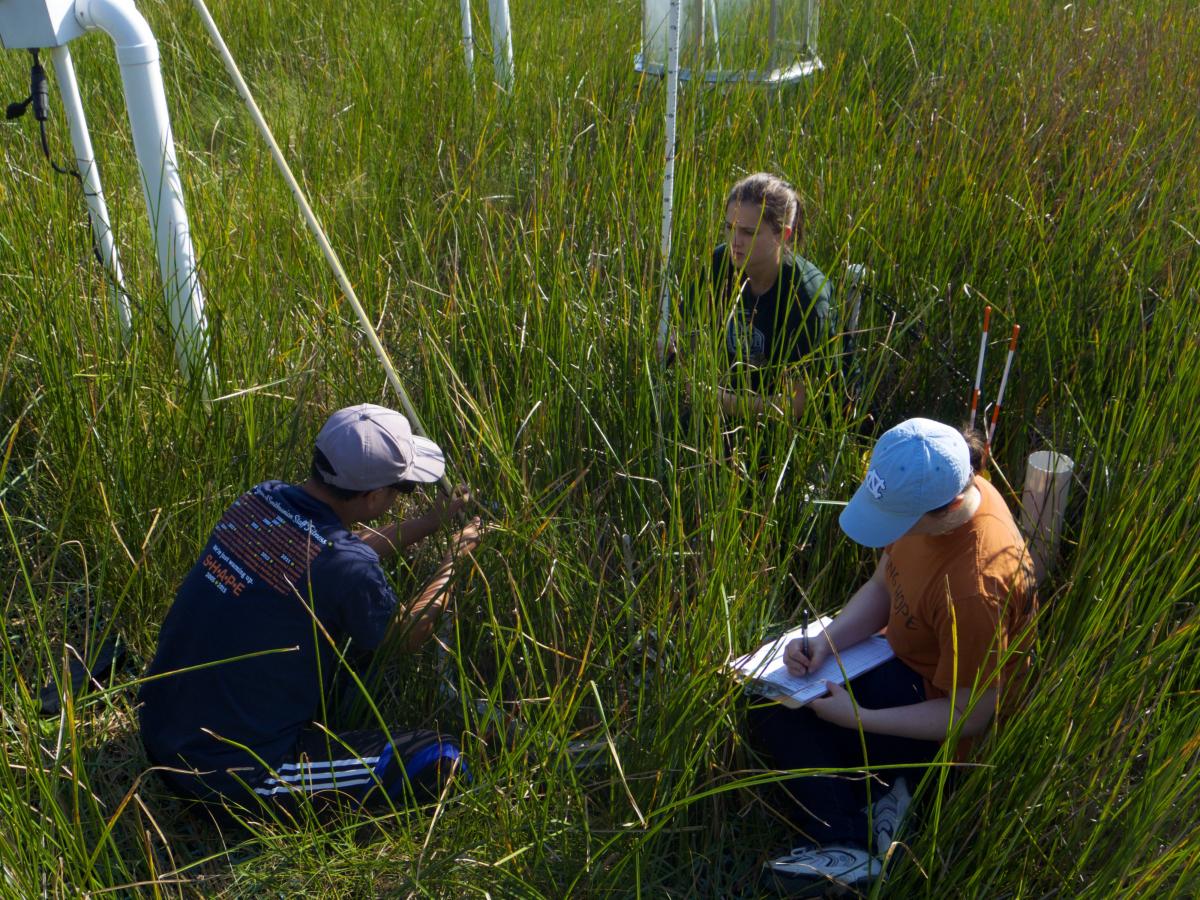Salt Marsh Census
About the Project
The Global Change Research Wetland (affectionately known as GCREW) has been studying the effect of gases on marsh growth since 1987 and continues to this day. Salt marshes are unique ecosystems that serve as nurseries and habitat for wildlife. They also protect coastal communities from things like flooding and storms.
We want to know how the plants in marshes like ours will react to a changing climate. Atmospheric changes in gases and sea level rise could have a big impact on where, how quickly, and how much plants in salt marshes grow.
History
There are three projects going on at GCREW as of summer 2015. The longest running project involves studying the effects of increased carbon dioxide (CO2) on plants. This project began in 1987 and is the longest running project of its kind.
The "What" and the "Why"
What are we trying to learn?
As carbon dioxide (CO2) levels rise, scientists want to know if plants would be a carbon sink. A carbon sink is a process that removes gases from the atmosphere. These sinks can occur naturally or be manmade. Natural carbon sinks include oceans and forests. They absorb more carbon dioxide gas than they release, which is useful to people, because we add billions of tons of carbon per year to the atmosphere.

Scientists are also looking at the effect of multiple different types of global change on the growth of the salt marsh. They simulate climate change by placing plants into different depths of water (sea level rise), pump predicted amounts of gases into chambers (increase in carbon dioxide), or heat the marsh (global warming). They measure the results of these changes to see how salt marshes will fare in a changing climate.
Finally, the Global Change Research Wetland is home to a major study looking at the growth and spread of Phragmites australis (Phrag for short). Phrag is an invasive reed that spreads quickly and grows up to 15 feet tall! Not all invasive species are destructive, and some get along well with new neighbors. However, Phrag cuts off access to light and nutrients to other plants and animal species and prevents them from growing.
Why do we care about salt marshes at all? Who cares if they disappear?

Salt marshes provide the habitat for numerous plants and species that will begin to disappear as salt marshes disappear. They are also often the first line of defense against storms. In New Orleans, where Hurricane Katrina made landfall in 2005 was surrounded by salt marsh 100 years ago. Over the last 100 years, this marsh has disappeared because of human activities (building structures on the coast), and sea level rise. Marsh plants will drown if they get too much water, so this also contributes to their diminishing numbers.
Methods

GCREW is an area in the Kirpatrick Marsh that is built for scientific research. A boardwalk runs through the marsh, giving scientists access to experimental plots, many of which have chambers for raising the carbon dioxide concentration around the plants. The chambers are made of PVC and plastics and they are different sizes based on the species of plant that grows inside. The chambers are open on the top and bottom, but block the wind so that carbon dioxide will not blow away too fast after it is pumped in. This creates the conditions of a changing climate that the whole world will experience by the year 2100.
Although there are different projects, the methods for measurement are the same. For each plant inside the chamber, we ask volunteers to measure the height (using long poles), and width (using calipers). There can be up to 200 plants to measure in one chamber, so this does take some time!

- As CO2 levels continue to rise, will the plants in this salt marsh be a carbon sink (buildup of solid organic carbon that is stored)?
- Will atmospheric changes in gases help plants survive sea-level rise?
- Does more CO2 promote invasion by non-native plants?
Get Involved
We have finished new volunteer recruitment for 2025 Census, and are no longer accepting new volunteers. Thank you to everyone who reached out and expressed interest!
Volunteers are key to the success of this project! We could not get as many chambers, process as many samples, or have as large of dataset without the help of committed volunteers.
Eligibility and Time Commitment
For the Summer 2025 census, volunteers must be
- At least 18 years old
- Able to volunteer for an entire experiment, which will fall over 2-3 days within this time frame: July 18 - August 1, 6 am - 3 pm
- Available to volunteer Monday - Tuesday or Wednesday - Friday schedule
- Able to bend frequently and measure small and delicate plant stems
- Comfortable being outside in hot, humid, wet, and muddy conditions